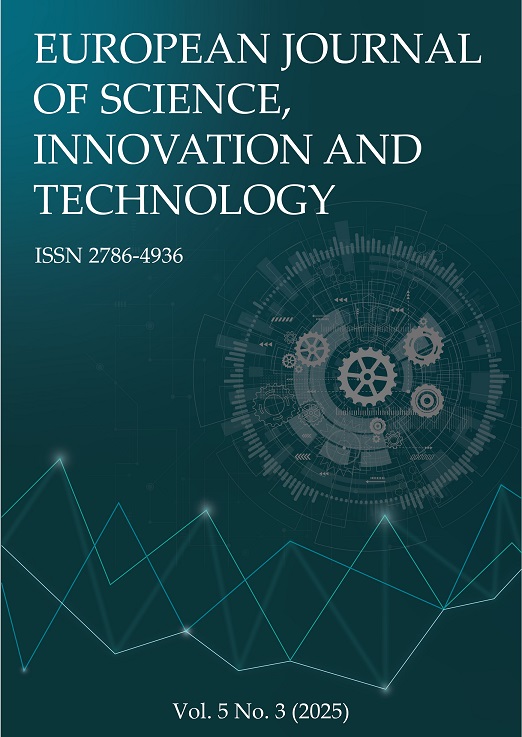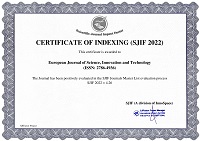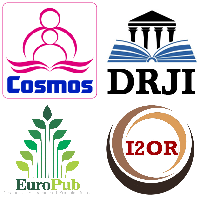Leveraging Generative AI In Marketing Operations and Internal Management
Abstract
Applying Generative Artificial Intelligence (GenAI) to both marketing activities and internal work is reshaping today’s business strategies. GenAI is notable because it can independently produce content like text, images, videos, and audio which many businesses are now using AI for. With this technology, creativity, efficiency, and innovation can happen in important parts of an organization. The paper studies how strategic and operational value is increased by using GenAI in marketing functions and management systems. The study relies on theories and reviews recent academic papers, case studies from the industry, and ideas introduced by top technology businesses. GenAI is found to improve marketing methods by producing content on the spot, reaching out to audiences right away, analyzing consumer opinions, and creating highly personalized campaigns. GenAI helps the company by automating repeatable jobs, aiding workers, sharing data in real time, and aiding chief-level choices. At the same time, adopting GenAI does pose some problems. People still worry about data safety, unfair decisions from algorithms, rules imposed by authorities, employees adjusting to technology, and ethical issues that stand in the way of full adoption. The study ends with the proposal of a strategic plan to handle these problems and make the most of GenAI. The study creates practical and theoretical results that can guide business experts, researchers, and marketers in making the right decisions about using GenAI.
References
Benhenda, M., & Esben Jannik Bjerrum. (2018). DiversityNet: a collaborative benchmark for generative AI models in chemistry. Authorea Preprint.
Brock, J. K. U., & von Wangenheim, F. (2019). Demystifying Ai: What digital transformation leaders can teach you about realistic artificial intelligence. California Management Review, 61(4), 110–134. https://doi.org/10.1177/1536504219865226
Chowdhury, S., Joel-Edgar, S., Dey, P. K., Bhattacharya, S., & Kharlamov, A. (2023). Embedding transparency in artificial intelligence machine learning models: managerial implications on predicting and explaining employee turnover. International Journal of Human Resource Management, 34(14), 2732–2764. https://doi.org/10.1080/09585192.2022.2066981
Chwiłkowska-Kubala, A., Cyfert, S., Malewska, K., Mierzejewska, K., & Szumowski, W. (2023). The impact of resources on digital transformation in energy sector companies. The role of readiness for digital transformation. Technology in Society, 74. https://doi.org/10.1016/j.techsoc.2023.102315
Doorn, N. (2021). Artificial intelligence in the water domain: Opportunities for responsible use. Science of the Total Environment, 755. https://doi.org/10.1016/j.scitotenv.2020.142561
Elahi, M., Afolaranmi, S. O., Martinez Lastra, J. L., & Perez Garcia, J. A. (2023, December 1). A comprehensive literature review of the applications of AI techniques through the lifecycle of industrial equipment. Discover Artificial Intelligence. Springer Nature. https://doi.org/10.1007/s44163-023-00089-x
Guercini, S. (2023). Marketing automation and the scope of marketers’ heuristics. Management Decision, 61(13), 295–320. https://doi.org/10.1108/MD-07-2022-0909
Haseeb, M., Sasmoko, Mihardjo, L. W. W., Gill, A. R., & Jermsittiparsert, K. (2019). Economic impact of artificial intelligence: New look for the macroeconomic assessment in Asia-pacific region. International Journal of Computational Intelligence Systems, 12(2), 1295–1310. https://doi.org/10.2991/ijcis.d.191025.001
Hsu, C. L. (2023). Enhancing brand love, customer engagement, brand experience, and repurchase intention: Focusing on the role of gamification in mobile apps. Decision Support Systems, 174. https://doi.org/10.1016/j.dss.2023.114020
Jain, V. (2019). An impact of artificial intelligence on business. International Journal of Research and Analytical Reviews, 6(2), 302–308.
Lo Piano, S. (2020). Ethical principles in machine learning and artificial intelligence: cases from the field and possible ways forward. Humanities and Social Sciences Communications, 7(1). https://doi.org/10.1057/s41599-020-0501-9
Luo, S., Lin, X., & Zheng, Z. (2019). A novel CNN-DDPG based AI-trader: Performance and roles in business operations. Transportation Research Part E: Logistics and Transportation Review, 131, 68–79. https://doi.org/10.1016/j.tre.2019.09.013
Luotsinen, L. J., & Lovlid, R. A. (2015). Data-Driven Behavior Modeling for Computer Generated Forces Data-Driven Behavior Modeling for. NATO Modelling and Simulation Group Symposium M&S Support to Operational Tasks Including War Gaming, Logistics, Cyber Defence, (October 2015), 1–13.
Lyu, X., Jia, F., & Zhao, B. (2023). Impact of big data and cloud-driven learning technologies in healthy and smart cities on marketing automation. Soft Computing, 27(7), 4209–4222. https://doi.org/10.1007/s00500-022-07031-w
Popo–Olaniyan, O., Elufioye, O. A., Okonkwo, F. C., Udeh, C. A., Eleogu, T. F., & Olatoye, F. O. (2022). Ai-driven talent analytics for strategic hr decision-making in the United States Of America: A Review. International Journal of Management & Entrepreneurship Research, 4(12), 607-622. https://doi.org/10.51594/ijmer.v4i12.674
Reed, S., Akata, Z., Yan, X., Logeswaran, L., Schiele, B., & Lee, H. (2016). Generative adversarial text to image synthesis. In 33rd International Conference on Machine Learning, ICML 2016 (Vol. 3, pp. 1681–1690). International Machine Learning Society (IMLS).
Reim, W., Åström, J., & Eriksson, O. (2020, June 1). Implementation of Artificial Intelligence (AI): A Roadmap for Business Model Innovation. AI (Switzerland). Multidisciplinary Digital Publishing Institute (MDPI). https://doi.org/10.3390/ai1020011
Santosh, K. C. (2020). AI-Driven Tools for Coronavirus Outbreak: Need of Active Learning and Cross-Population Train/Test Models on Multitudinal/Multimodal Data. Journal of Medical Systems, 44(5). https://doi.org/10.1007/s10916-020-01562-1
Smith, G. (2017). Generative design for textiles: Opportunities and challenges for entertainment AI. In Proceedings of the 13th AAAI Conference on Artificial Intelligence and Interactive Digital Entertainment, AIIDE 2017 (pp. 115–121). AAAI press. https://doi.org/10.1609/aiide.v13i1.12925
Soto-Morettini, D. (2017). Reverse engineering the human: artificial intelligence and acting theory. Connection Science, 29(1), 64–76. https://doi.org/10.1080/09540091.2016.1271398
Sylolypavan, A., Sleeman, D., Wu, H., & Sim, M. (2023). The impact of inconsistent human annotations on AI driven clinical decision making. Npj Digital Medicine, 6(1). https://doi.org/10.1038/s41746-023-00773-3
Todd, S. (2015). Inside the surprisingly sexist world of artificial intelligence. Retrieved from http://qz.com/531257/inside-the-surprisingly-sexist-world-of-artificial-intelligence/
Trocin, C., Hovland, I. V., Mikalef, P., & Dremel, C. (2021). How Artificial Intelligence affords digital innovation: A cross-case analysis of Scandinavian companies. Technological Forecasting and Social Change, 173. https://doi.org/10.1016/j.techfore.2021.121081
Wang, M., Marsden, J., & Thomas, B. (2023). Smart mirror fashion technology for better customer brand engagement. International Journal of Fashion Design, Technology and Education. https://doi.org/10.1080/17543266.2023.2243485
Wang, Y. (2021). Artificial intelligence in educational leadership: a symbiotic role of human-artificial intelligence decision-making. Journal of Educational Administration, 59(3), 256–270. https://doi.org/10.1108/JEA-10-2020-0216
Wenzel, S., Kleer, N., & Kunz, R. E. (2023). Customer engagement behaviour in the media and technology industry: a quantitative content analysis of content types and COVID-19 context. Journal of Media Business Studies, 20(3), 241–263. https://doi.org/10.1080/16522354.2022.2139997
Yin, D., Li, M., & Qiu, H. (2023). Do customers exhibit engagement behaviors in AI environments? The role of psychological benefits and technology readiness. Tourism Management, 97. https://doi.org/10.1016/j.tourman.2023.104745
Copyright (c) 2025 Ravi Teja Surampudi

This work is licensed under a Creative Commons Attribution 4.0 International License.


 ISSN
ISSN 











